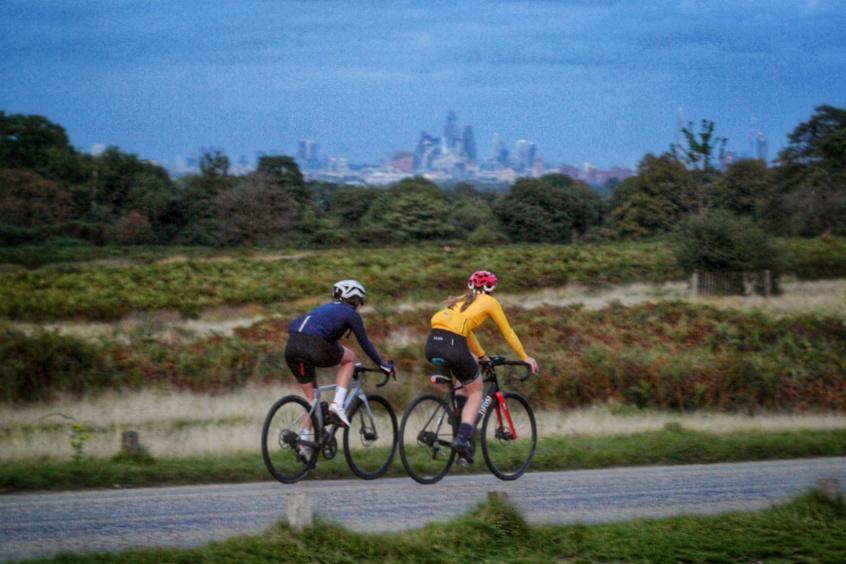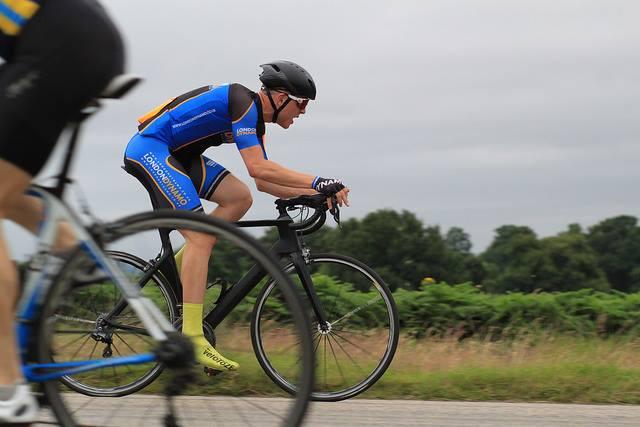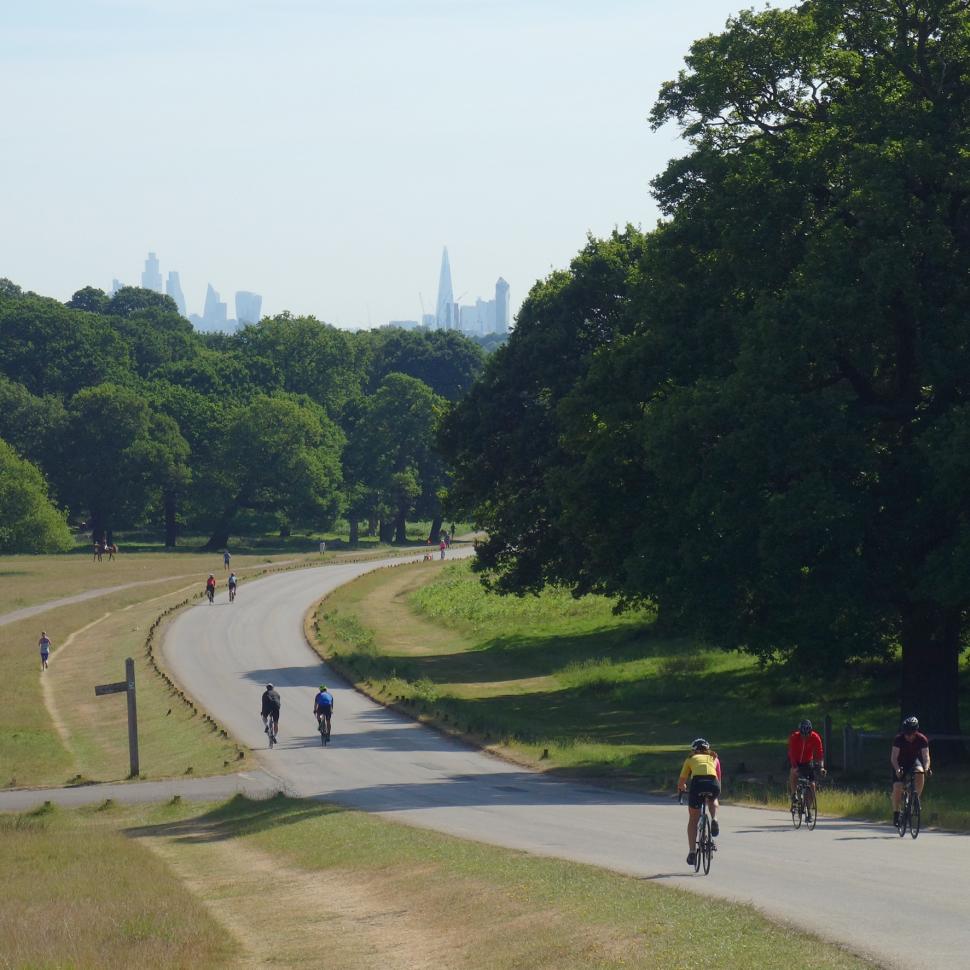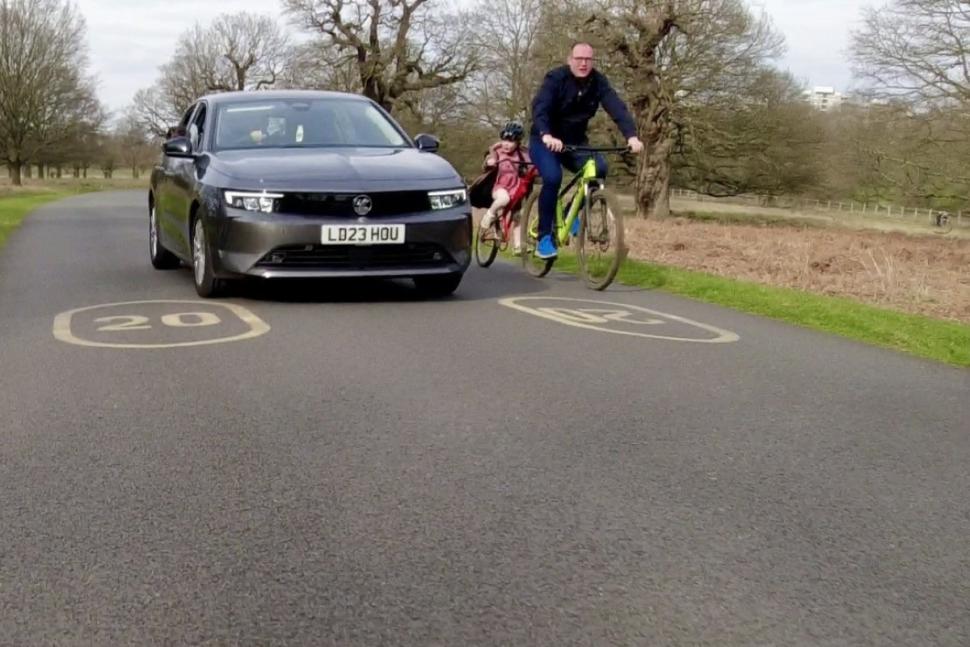- News
- Reviews
- Bikes
- Components
- Bar tape & grips
- Bottom brackets
- Brake & gear cables
- Brake & STI levers
- Brake pads & spares
- Brakes
- Cassettes & freewheels
- Chains
- Chainsets & chainrings
- Derailleurs - front
- Derailleurs - rear
- Forks
- Gear levers & shifters
- Groupsets
- Handlebars & extensions
- Headsets
- Hubs
- Inner tubes
- Pedals
- Quick releases & skewers
- Saddles
- Seatposts
- Stems
- Wheels
- Tyres
- Tubeless valves
- Accessories
- Accessories - misc
- Computer mounts
- Bags
- Bar ends
- Bike bags & cases
- Bottle cages
- Bottles
- Cameras
- Car racks
- Child seats
- Computers
- Glasses
- GPS units
- Helmets
- Lights - front
- Lights - rear
- Lights - sets
- Locks
- Mirrors
- Mudguards
- Racks
- Pumps & CO2 inflators
- Puncture kits
- Reflectives
- Smart watches
- Stands and racks
- Trailers
- Clothing
- Health, fitness and nutrition
- Tools and workshop
- Miscellaneous
- Buyers Guides
- Features
- Forum
- Recommends
- Podcast
news
 Cyclists in Richmond Park with London skyline (copyright Simon MacMichael)
Cyclists in Richmond Park with London skyline (copyright Simon MacMichael)Cyclists riding “at excessive speeds” and causing crashes prompt Royal Parks to review cycling policy, as charity cancels time trial events because “they directly encourage cyclists to go faster than speed limit”
The Royal Parks has confirmed it is currently reviewing its policy on cycling in the wake of what the charity calls “several” incidents “linked to a minority of people cycling at excessive speeds”, a day after it was announced that the annual Richmond Park time trial events have been cancelled due to fears that the races encourage cyclists to ride faster than the park’s 20mph speed limit for motorists.
Yesterday, we reported that the popular time trials in Richmond Park, organised by the London Dynamo cycling club and previously scheduled to take place on 23 June and 7 July this year, have been cancelled by the Royal Parks on safety grounds related to the speeds achieved by participants during the races, along with the apparent threat posed to the cyclists by the park’s deer population.
Starting at 6am, an hour before the gates for motorists open in the south-west London park, the time trials have long been lauded for their inclusivity and for providing a gateway into the sport for young people and beginners, nervous at the prospect of riding alongside fast-moving traffic, but able to race on largely traffic-free roads.
However, yesterday the events’ organisers and local cyclists speculated that the cancellation of the only time trials permitted in London’s royal parks owed much to the media coverage and anti-cycling sentiment surrounding the recent inquest into the tragic death of an elderly pedestrian following a collision with a cyclist in Regent’s Park in June 2022 – a theory since confirmed by the Royal Parks itself in a statement to road.cc this morning.
Last month, a coroner’s inquest heard that cyclist Brian Fitzgerald, while riding as part of a group in Regent’s Park’s Outer Circle travelling at between 25-29mph, hit an 81-year-old pedestrian, causing her to suffer several broken bones and bleeding on the brain, injuries she died from in hospital two months later.
Fitzgerald was not prosecuted, however, for his role in her death, with the Metropolitan Police concluding that there was “insufficient evidence for a real prospect of conviction”.
Following the inquest, the Royal Parks – the charity which manages eight of London’s royal parks including Richmond Park and Regent’s Park – contacted Strava to request that the park’s Outer Circle segment be deleted, believing that this may deter cyclists from riding the route at high speeds, and prompting the ride-sharing app to remind its users and the public that “hazardous” segments can already be flagged and urging cyclists to “prioritise everyone’s safety”.
And this morning, Richmond Park’s manager Paul Richards confirmed to road.cc that the charity is now undertaking a general review of its policies surrounding cycling and cycling events, along with the parks’ infrastructure, in the wake of “several” high-profile incidents involving a “minority” of cyclists riding at speed.
“The Royal Parks charity takes the safety of all park visitors and road users extremely seriously,” Richards told road.cc.
“Following several cycling-related incidents within the Royal Parks, linked to a minority of people cycling at excessive speeds, it is our duty to take action to minimise the risk of accidents and our priority to ensure the safety of all cyclists together with other visitors.
“We strive to create a relaxing and welcoming environment for the cycling community. We have reduced cut-through motor traffic and invested in safety measures to protect cyclists, pedestrians, and other road users, including the equine community.”
He continued: “We continue to review and explore our current cycling events, our cycling policy, and the infrastructure across the Royal Parks.
“During this period of review, we have taken the decision to not permit the time trial events on 23 June and 7 July, as they directly encourage cyclists to go faster than the speed limit of the road.
“Enforcement of the law and park regulations is the responsibility of the Metropolitan Police.”
Speaking to road.cc on Thursday evening, the organiser of the Richmond Park Time Trials, London Dynamo chairperson Andy Taylor, expressed his disappointment at the decision to cancel the events, pointing out that he believes the charity was placed “under a lot of pressure” to take action due to the anti-cycling sentiment generated by the recent coroner’s inquest into the 81-year-old’s pedestrian’s death.
“We’ve had a very longstanding, good relationship with the Royal Parks,” Taylor told road.cc. “While we’re very disappointed and upset with the decision, we understand where they’re coming from – but I still disagree with it.
“I think they’ve come under a lot of pressure following that media storm around the coroner’s inquest. There was a lot of anti-cycling sentiment around it, so I can see why they did it.
“We offered to meet them and collaborate with them. We did a very detailed risk assessment – every bump and corner in the park was assessed, we have lots of marshals.
“And there’s barely any traffic – most of the time we’re out before the gates have even opened for car traffic. So it’s very frustrating that they didn’t really engage with us and just decided to cancel it. I think they didn’t want to see themselves associated with an event linked to excessive speed in the park.”
> Cyclists blast proposals to introduce 10mph speed limit on Richmond Park hill
Taylor said he first “caught wind” that the Royal Parks were raising concerns about the time trials last month, when the media coverage around the coroner’s inquest was at its height, leading to London Dynamo – along with the Richmond Park Cyclists group – moving to lobby the charity to ensure the races could go ahead.
However, despite a prolonged exchange over email, Taylor claims the Parks’ board of directors declined the opportunity to meet face-to-face to discuss the issue.
The cycling club chair notes that one email he received from the Royal Parks claimed that the time trials were “promoting” cyclists riding faster than the 20mph speed limit for motorists and that the park’s deer “posed a danger” to those taking part.
“The deer can be a hazard, but that’s something all the riders are warned about,” he says. “It’s not a new thing, everyone knows the deer are there.
“Neither of these things are new – the 20mph speed limit has been there for quite some time. So you have to question the timing of the decision. They didn’t mention the Regent’s Park incident to us at all, but the two are clearly closely linked.”
Pending the outcome of the Royal Parks’ current review, Taylor says he is now focused on securing another venue for the annual time trial events.
“I asked the Royal Park if this was all just a temporary reaction to current events, but they said it was likely to be permanent,” he says.
“We’re just thinking about what we do next. We’d like to keep a time trial event on our calendar, but it’s unlikely to be in Richmond Park. We’ll have to look elsewhere for another venue.”
After obtaining a PhD, lecturing, and hosting a history podcast at Queen’s University Belfast, Ryan joined road.cc in December 2021 and since then has kept the site’s readers and listeners informed and enthralled (well at least occasionally) on news, the live blog, and the road.cc Podcast. After boarding a wrong bus at the world championships and ruining a good pair of jeans at the cyclocross, he now serves as road.cc’s senior news writer. Before his foray into cycling journalism, he wallowed in the equally pitiless world of academia, where he wrote a book about Victorian politics and droned on about cycling and bikes to classes of bored students (while taking every chance he could get to talk about cycling in print or on the radio). He can be found riding his bike very slowly around the narrow, scenic country lanes of Co. Down.
Latest Comments
- BikingBud 12 min 12 sec ago
So he was being innovative and not ossifying then? Make your mind up!...
- mdavidford 17 min 25 sec ago
I know he's been famously arrogant and litigious, but surely even he doesn't have the gall to attempt to patent that?
- mdavidford 50 min 11 sec ago
Now I don't do any of this InstaTok business, so I could well be wrong, but it looks to me like he's only outed himself as a follower of someone...
- amawby 1 hour 10 min ago
Not unless theVED is made eye wateringly expensive....
- mdavidford 1 hour 20 min ago
My mum always told me I'd inherited her 'hobbit feet', though as far as I'm aware we don't have any family in New Zealand.
- andystow 1 hour 38 min ago
Hyponatremia is a real risk even for an amateur cyclist or runner in hot weather. I've bonked from it before, and I was drinking Gatorade the whole...
- wtjs 2 hours 20 min ago
in the UK we have policing which to a greater or lesser extent relies on assistance from members of the public......
- SecretSam 3 hours 38 min ago
So...don't cycle on it. Lots of other routes around that area. Source: I used to work there.
- Steve K 3 hours 58 min ago
My photochromic specs have just turned up in the post today
- Paul J 4 hours 4 min ago
Downhill Alpe d'Huez TT would be _awesome_. And someone should organise one for real!...




Add new comment
48 comments
I don't know. I cycle sometimes, and I think I bit someone once. All I can say is sorry to the rest of the cycling community.
So it's you who's to blame for all the hate cyclists get?
Were you cycling when you bit them, that's the important question.
99% of stabbing victims have been stabbed by an anonymous pedestrian. Don't you think it's about time pedestrians were made identifiable with a number plate?
Maybe contact the clubs of those riders wearing club colours. Explain that their riders behave as if they're trying to set Strava times on a busy shared use path. There's a time and a place to go fast but a shared use path busy with riders of all speeds as well as pedestrians and dog walkers isn't it.
The average bike/cyclists needs to be travelling at around 400mph to have the same kinetic energy of an average car/driver travelling at 20mph.
It's not all about KE.
Graphs! We want graphs!
https://aaafoundation.org/impact-speed-pedestrians-risk-severe-injury-de...
... pointing at:
https://pubmed.ncbi.nlm.nih.gov/22935347/
Content reproduced here:
https://nacto.org/wp-content/uploads/2017/11/2011PedestrianRiskVsSpeed.pdf
..
Would you like to explain to us what else it is about and how this compares to KE?
It's about the transference of kinetic energy, but more critically in many bicycle collisions the way in which a knocked over pedestrian impacts the ground.
A pedestrian weighing 80kg has KE of ~ 7kJ at 30mph. A 1500kg car at same speed has a KE of ~ 135kJ at 30mph. If the car hits a pedestrian that is stationary, the car's KE will drop by 7kJ and the pedestrian's KE will increase by 7kJ and the car's velocity will also drop (conservation of momentum gives a total KE of 135kJ but with a mass of 1580kg - solving for v gives 13.4m/s or ~29.9 mph). This KE is transferred in a very short time, i.e. the pedestrian (or parts thereof) goes from 0 to just short of 29.9 mph in a matter of ms.
As my dad used to say, "It's not the fall that kills you, it's the sudden stop at the bottom."
You're assuming the ped accelerates to 30 mph rather than going over the bonnet or being knocked down and run over.
If only there were some kind of ethical way of dynamically investigating these collisions...
I assumed it was film of that gentleman dropping cadavers down a lift shaft in the states.
That's why I said 'or parts thereof'.
Whatever the outcome (over, under, through (the windscreen)) there is a maximum amount of KE that can be imparted/exchanged and that is determined by the mass of the smallest body (in this case the pedestrian) and the impact velocity. The speed of energy transfer is what causes the damage.
30mph is a 9m (30ft) fall, you may survive that you may not, it all depends on how you land and what you fall on.
A flying fist has little kinetic energy yet may cause someone to be knocked out and to fatally hit their head on the ground.
I think you got your sums wrong there. With kinetic energy = 1/2 mass * speed**2, if the car weighs, say, 20 times more than the cyclist, the cyclist's speed will need to be around 4.5 (= square root of 20) times that of the car to yield the same k. e.
The shape and hardness of something you collide with are also likely to have an effect on the severity of any injuries you sustain.
Pages